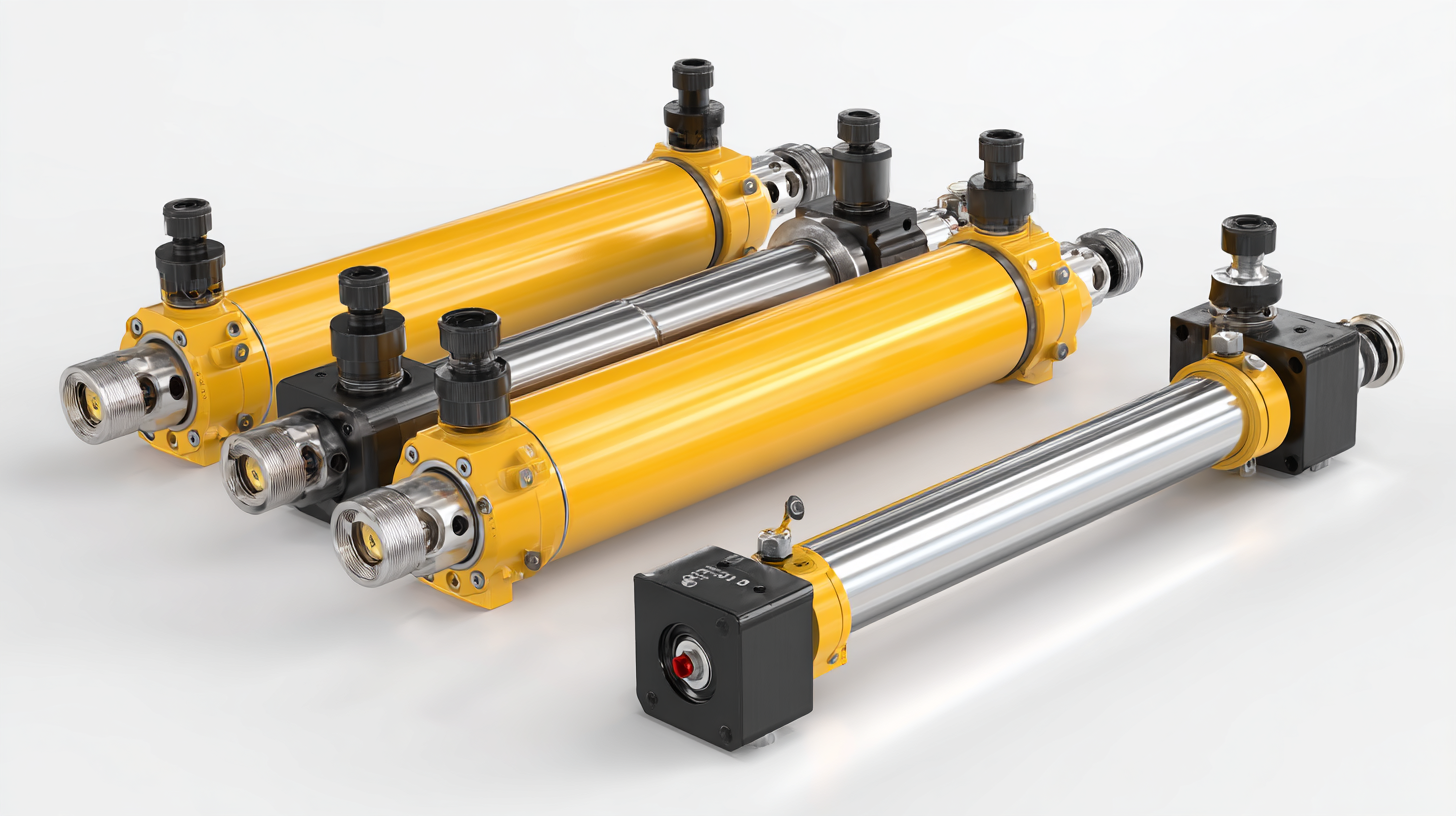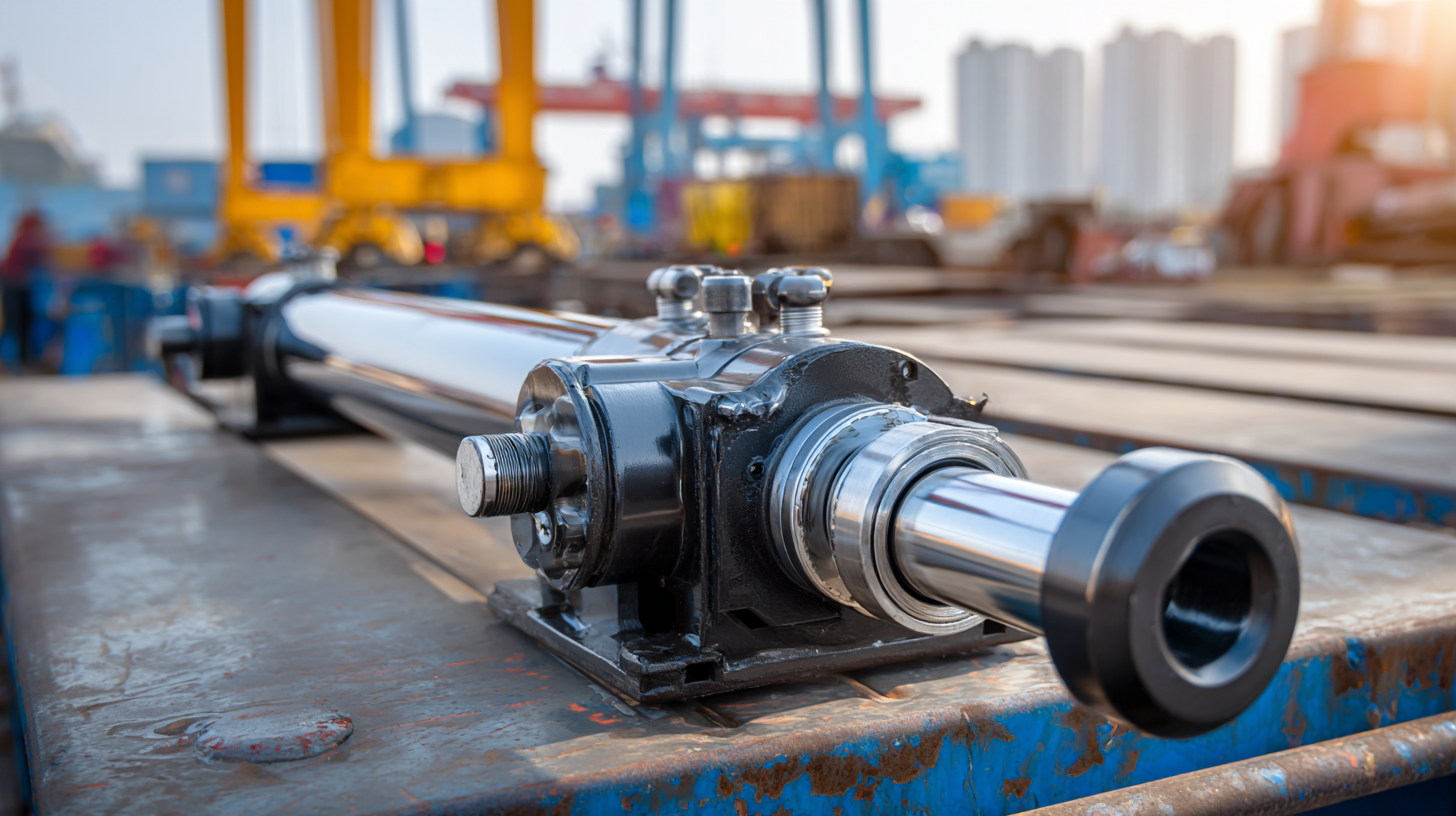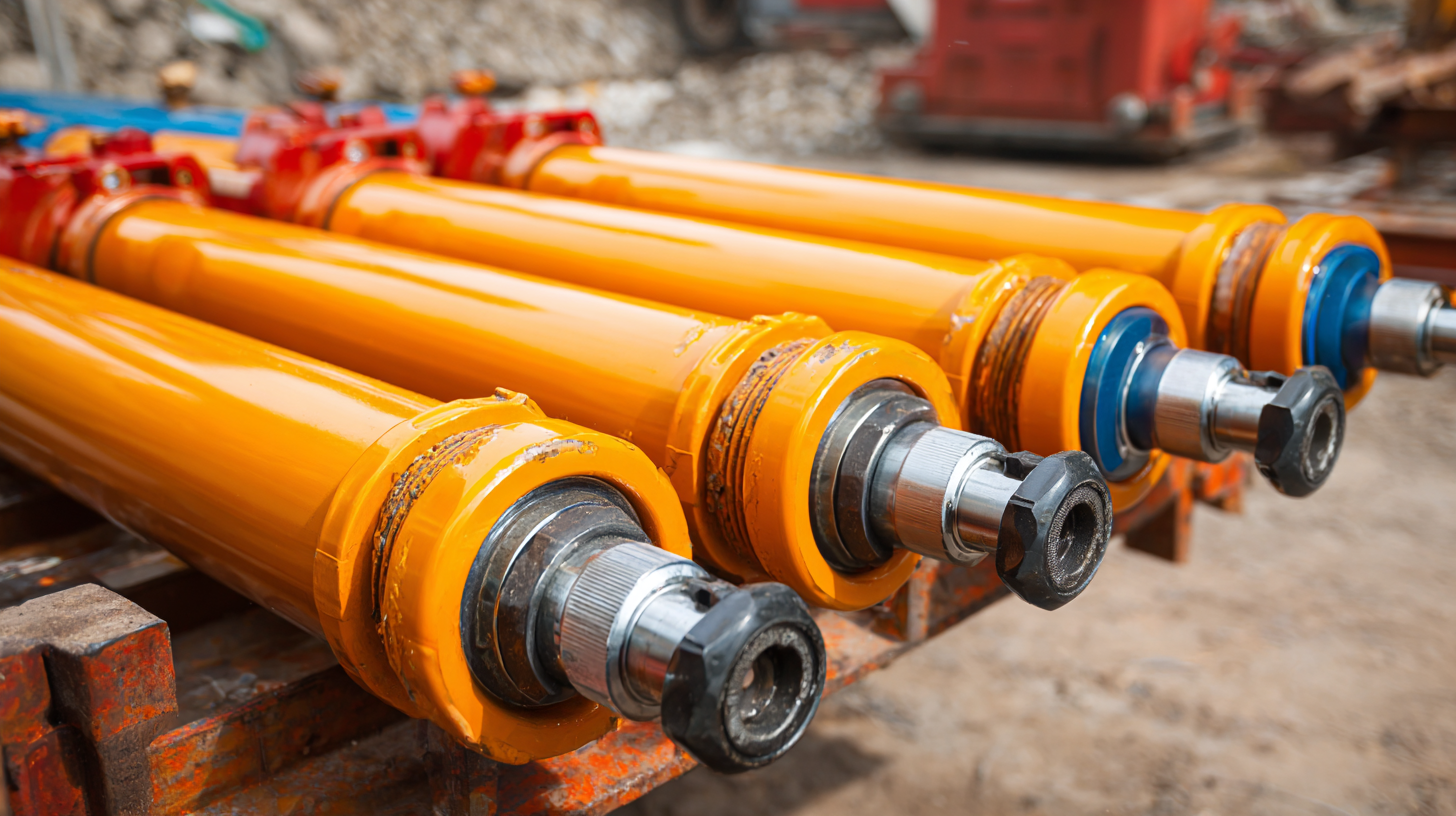
Understanding the Best Hydraulic Oil Cylinder Types for Your Needs
In the world of hydraulic systems, choosing the right Hydraulic Oil Cylinder is pivotal for ensuring operational efficiency and reliability. According to a report by Research and Markets, the global hydraulic cylinder market is projected to reach $14.32 billion by 2027, driven by the increasing demand for hydraulic systems across various industries such as construction, agriculture, and manufacturing. Selecting high-quality Hydraulic Oil Cylinders is essential not only for enhancing equipment performance but also for minimizing downtime and maintenance costs.

This blog aims to provide insights into the best types of hydraulic oil cylinders suited for your specific needs, while also emphasizing the importance of partnering with reputable manufacturers that deliver both innovation and quality. By understanding the diverse options available, you can make informed decisions that align with your operational requirements.
The Importance of Choosing the Right Hydraulic Oil Cylinder for Your Application
Choosing the right hydraulic oil cylinder is crucial for optimizing performance and ensuring the longevity of your equipment. Each application has unique requirements, and selecting the appropriate cylinder type can significantly affect efficiency and operational reliability. For instance, if you are working in high-pressure environments, a cylinder designed for such conditions can prevent failures and enhance safety. Understanding the specific parameters of your operation, such as load capacity and stroke length, will guide you in making an informed choice.
Moreover, different hydraulic oil cylinders come with distinct features that cater to various industries. For example, compact cylinders are ideal for confined spaces, while telescopic cylinders are perfect for applications requiring extended reach. By assessing your application’s needs, including the type of hydraulic fluid, temperature, and external environment, you can select a cylinder that not only meets these criteria but also offers enhanced performance. Ultimately, investing time in understanding and choosing the right hydraulic oil cylinder will yield better efficiency and save costs in maintenance and downtime.
Understanding the Best Hydraulic Oil Cylinder Types for Your Needs
| Hydraulic Cylinder Type | Max Pressure (psi) | Bore Size (inch) | Stroke Length (inch) | Material |
|---|---|---|---|---|
| Single Acting Cylinder | 3000 | 2.0 | 12 | Steel |
| Double Acting Cylinder | 3500 | 3.0 | 16 | Aluminum |
| Telescopic Cylinder | 2500 | 4.0 | 20 | High-Strength Steel |
| Hydraulic Press Cylinder | 5000 | 5.0 | 10 | Cast Iron |
Evaluating After-Sales Service Advantages in Hydraulic Cylinder Maintenance
When it comes to hydraulic cylinder maintenance, the significance of after-sales service cannot be overstated. According to a 2022 report by the International Fluid Power Society, over 30% of hydraulic failures can be attributed to inadequate maintenance practices. This statistic highlights the necessity for reliable after-sales support to ensure operational longevity and efficiency. After-sales service can provide immediate access to expert technicians, genuine replacement parts, and tailored maintenance plans that align with specific industrial demands.
Tips: Always inquire about the availability of after-sales support when purchasing hydraulic cylinders. Ensure that the manufacturer offers comprehensive maintenance training and access to spare parts to avoid unnecessary downtime in your operations.

In addition, effective communication with your service provider can lead to proactive maintenance strategies. A survey conducted by Machinery Lubrication found that companies that engaged in regular consultations with their service providers reported a 25% increase in equipment lifespan. This collaboration fosters an environment of continuous improvement, ensuring that your hydraulic systems operate at peak performance.
Tips: Establish a record-keeping system for all maintenance activities, as this can enhance communication with your service provider and help identify recurring issues sooner.
Cost Considerations for Repairing Different Hydraulic Cylinder Types
When considering the repair costs for different types of hydraulic cylinders, it’s essential to recognize that not all cylinders are created equal. According to a report from the International Fluid Power Society, the average cost of repairing a rod-type hydraulic cylinder is between $300 and $700, while the more complex tandem cylinders can range from $800 to $1,500 due to their intricate design and additional parts. This discrepancy arises from the differing levels of disassembly and reassembly required, which significantly impacts labor expenses.

Additionally, the materials used in the construction of hydraulic cylinders play a vital role in repair costs. A study by the National Fluid Power Association indicates that cylinders made from high-grade materials may incur higher initial repair costs, but they often lead to longer lifespan and lower maintenance requirements over time. This means that while the upfront repair cost may be higher, the overall cost of ownership could be reduced in the long run. Ultimately, understanding these cost considerations can greatly help businesses in making informed decisions when selecting and maintaining their hydraulic systems.
Examples of Common Hydraulic Cylinder Types and Their Specific Uses
When selecting hydraulic cylinders, it is essential to understand their specific types and applications. One common type is the double-acting hydraulic cylinder, which utilizes hydraulic pressure on both sides of the piston to generate force in both extending and retracting motions. This versatility makes it ideal for applications such as construction equipment, where precision and control are critical.
Another prevalent type is the single-acting hydraulic cylinder, which only applies pressure on one side of the piston, using a spring or external force for retraction. This design is often employed in lighter applications, such as clamping devices and automotive lifts, where space constraints and simplicity are paramount. Additionally, telescopic cylinders are increasingly popular for applications requiring a long stroke length in a compact space, such as dump trucks and mobile elevating work platforms, where extending the reach without sacrificing structural integrity is crucial. Understanding these common hydraulic cylinder types and their specific uses can help in selecting the right solution for your operational needs.
Understanding the Best Hydraulic Oil Cylinder Types for Your Needs
Understanding the Impact of Cylinder Materials on Longevity and Performance
When selecting a hydraulic oil cylinder, the material used in its construction plays a crucial role in determining both longevity and performance. Common materials include steel, aluminum, and composite materials, each with unique properties suited for different applications. Steel, for instance, is renowned for its strength and durability, making it ideal for high-pressure environments. However, it can be heavier, which may not be suitable for all applications. On the other hand, aluminum cylinders are lightweight and resistant to corrosion, perfect for applications where weight savings are essential, although they may not handle the same pressure levels as their steel counterparts.
Moreover, the surface treatment of these materials significantly affects the performance of the hydraulic cylinder. Protective coatings can enhance resistance to wear and tear, prolonging the life of the cylinder. For example, chrome plating on steel cylinders can provide a slick surface that enhances performance by reducing friction, while anodized aluminum improves corrosion resistance. Understanding these material characteristics and their impact on the cylinder’s functionality ensures that you choose a hydraulic oil cylinder that meets your operational needs while maximizing its lifespan in your specific application environment.
